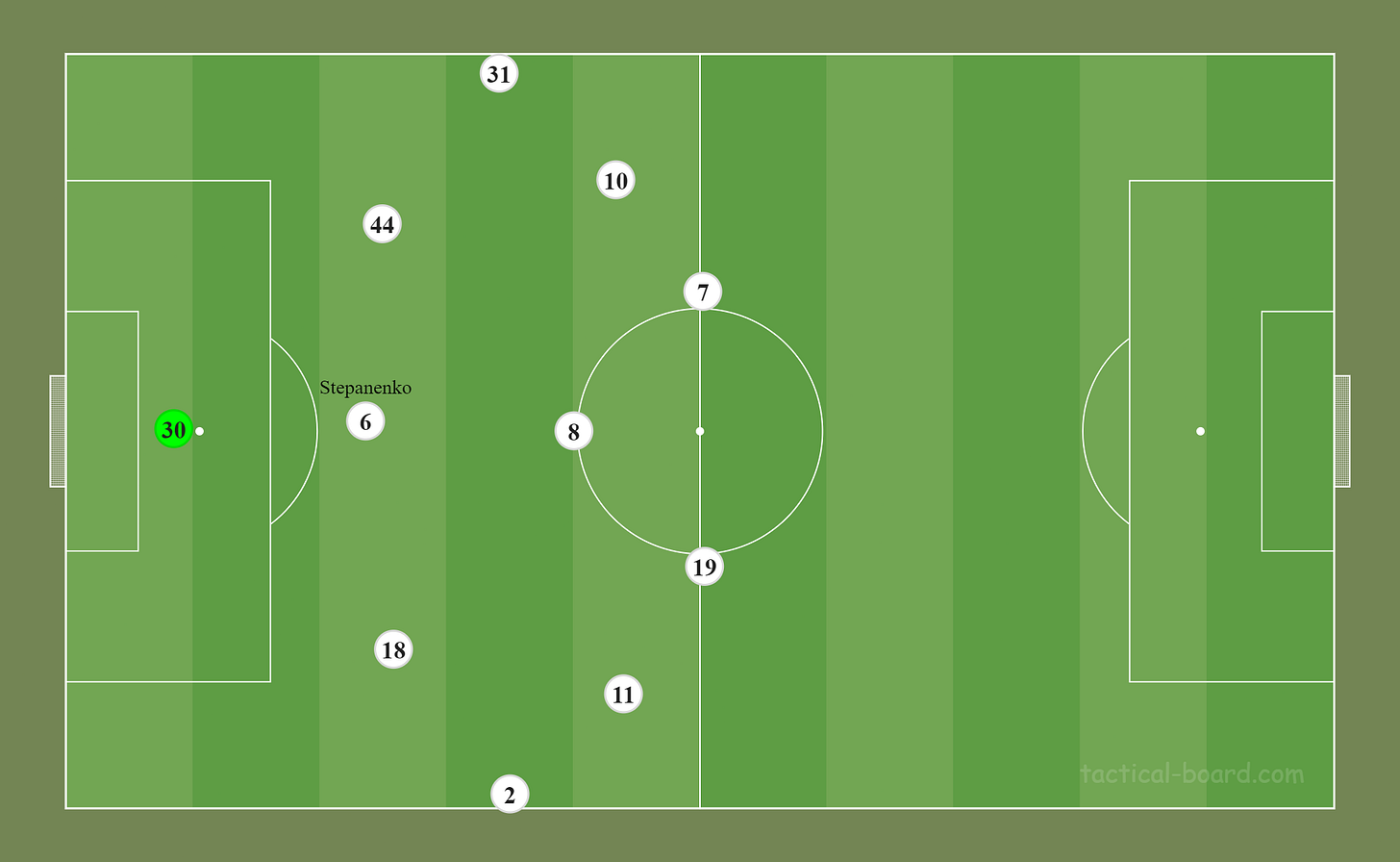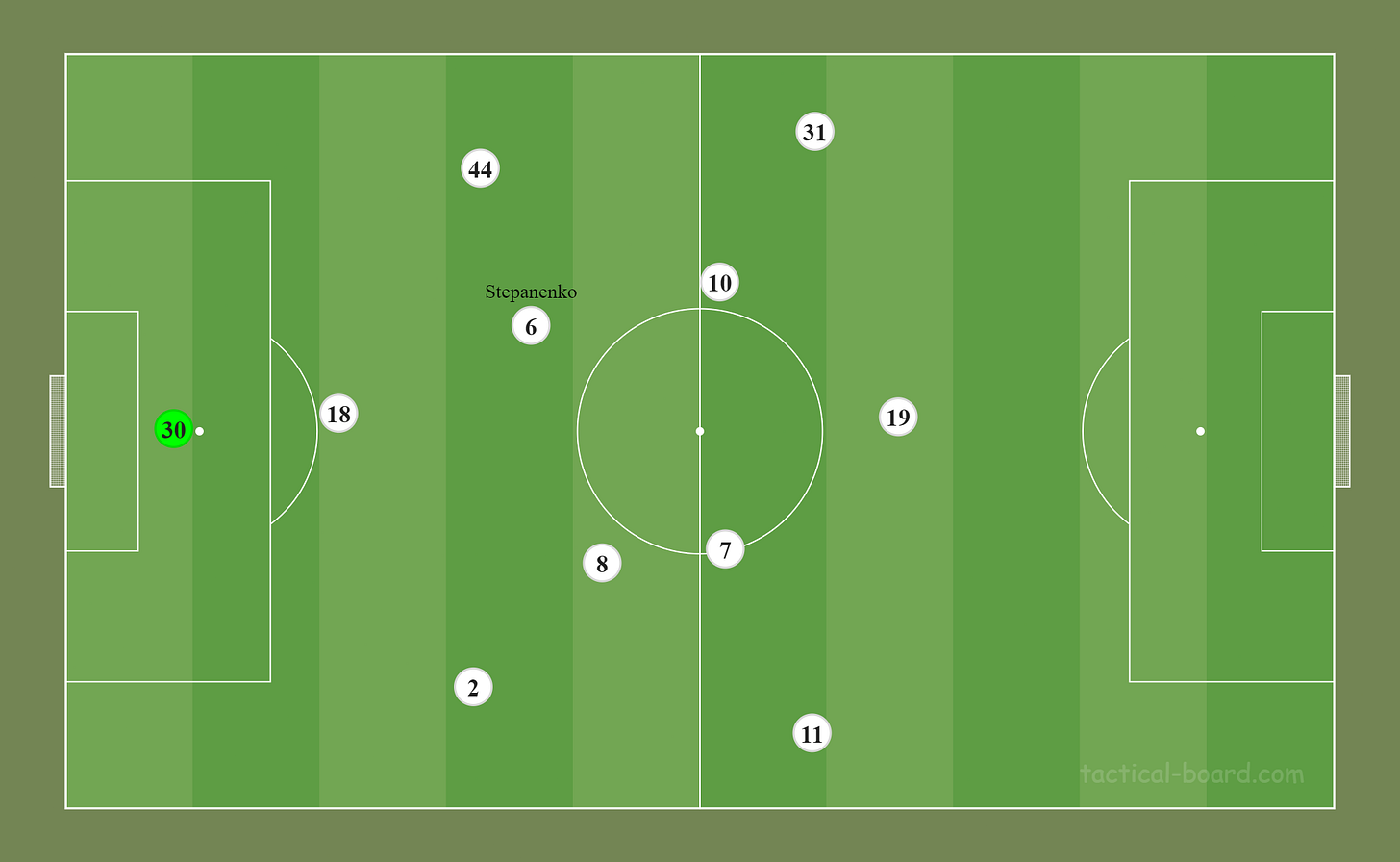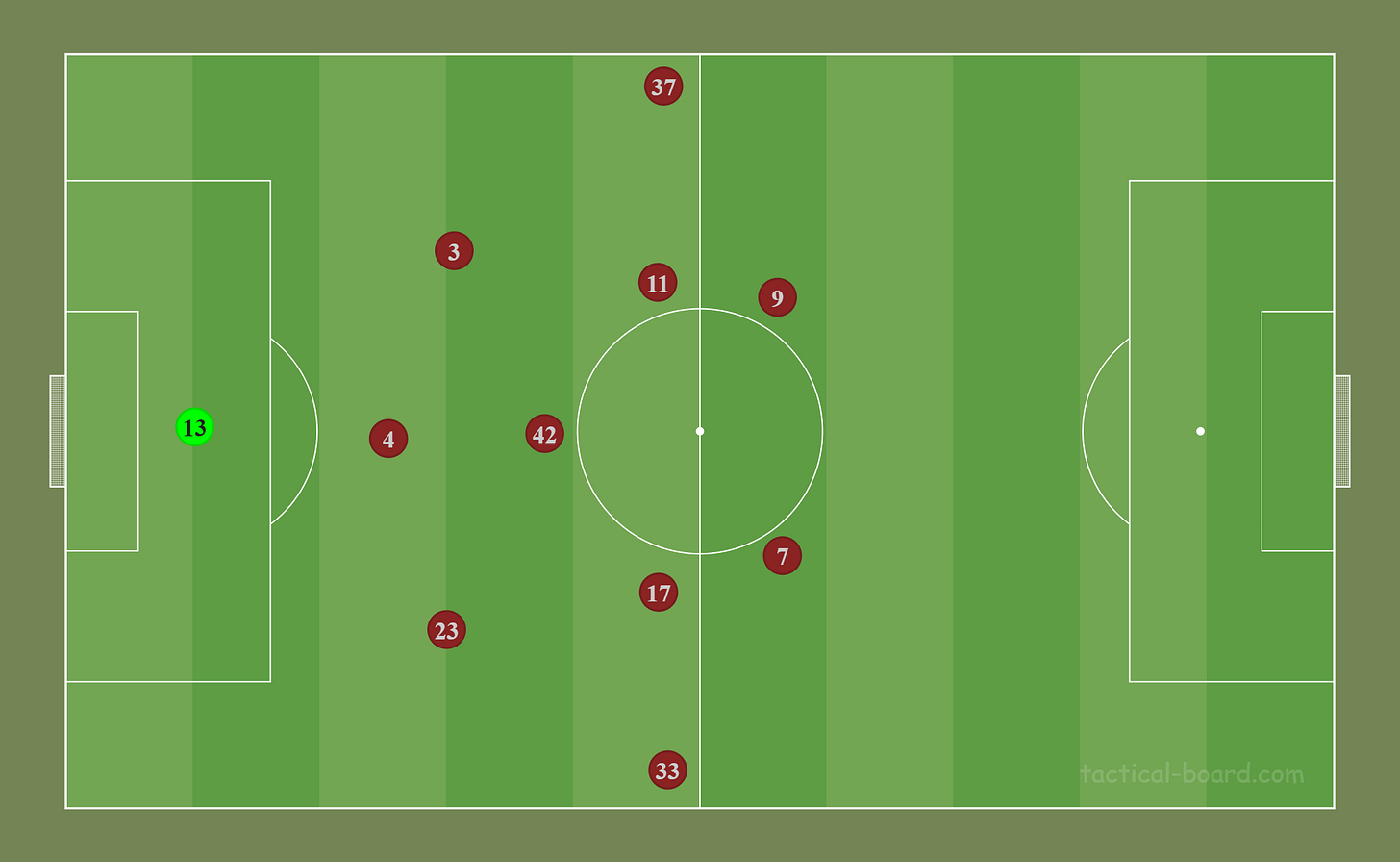Chaos Control
footballing ideations chapter two—understanding paulo fonseca's possession-based structure
So close, and yet so far.
That’s the story of Paulo Fonseca’s failed move to Tottenham Hotspur. At the time, it intrigued and excited me. He fit what Spurs were looking for, a manager who would return them to the high-flying, fast paced attacking football they played under Mauricio Pochettino. Although Pochettino emphasized more of an intense press, Fonseca was no slouch there either. All the pieces fit. And yet it didn’t transpire.
Now, I’m not here to write a soliloquy about the injustice that was his contract negotiations with the club. But thinking about this entire saga got me thinking about his football once again. A manager who embodies the “live by the sword, die by the sword” mantra, Paulo Fonseca is the most polarizing manager in Europe. His approach to playing attractive, attacking football enthralls me so much that I just had to give him the spotlight once more. I believe looking at his matches against Manchester City in the Champions League and the first leg against AFC Ajax in the Europa League will give us a better insight on what he offers to a club.
Fonseca’s Footballing Philosophy
Always a coach in flux.
Paulo Fonseca’s time at Shakhtar Donetsk was filled with constant strife and turmoil through extraneous circumstances to say the least. Being forced to play most of their matches away from their home ground, training in a Soviet Union olympic facility, and also being hamstrung by economic constraints—it’s a wonder how Fonseca was able to do so much with so little.
“There’s nothing better than playing the game with the ball. — Paulo Fonseca
This quote, taken from the the wonderful “Football is a World” mini-documentary, highlights exactly what Fonseca looks to accomplish with his sides. He’s a coach that loves having the ball, treasuring it like a family heirloom. Ideas like this translate better to the league (which Shakhtar tend to dominate) than they do to European competition. But to really drive this point home, we can take a look at his teams in these comps.
vs. Manchester City (September 2017)
Starting off with the first match against Manchester City—
Fonseca’s side were the clear underdogs in the match, going into a hostile Etihad against Pep Guardiola’s (eventual) Centurions side. This was a tough matchup for the Ukrainian outfit, but they still stuck to their ideas from the first minute to the last.
Beginning with the shape—Fonseca usually employed a 4-2-3-1, which would help retain the ball in the midfield areas. Here are some things Shakhtar looked to do throughout the match;
Diagram One—
Fullbacks splitting out wide to facilitate build-up (see 2 and 31), and almost play as wingbacks in possession,
Double pivot drops deep to assist and help break the opponents press, giving both the central defenders and the goalkeeper two more passing options,
Build-up takes place very deep in own half, with the ball tending to move vertically in transition,
Goalkeeper very valuable in build-up, allows for proper recycling of possession and adds long ball dimension to build-up,
In attack and on the counter, fullbacks overlap wingers, allowing for quick interchanges in tight spaces and outnumbering the defenders on the flanks,
Deep crosses from wide players into a crowded box, creating chaos which creates opportunity (think “chaos is a ladder"),
All of these tenets are symptomatic of Paulo Fonseca’s risk-reward approach to football. Ultimately, Fonseca’s team looked to be ferocious after lulling the opposition to sleep with methodical build-up play.
As much as I admire Fonseca’s approach and ideals, this approach will not bear fruit against a side such as Manchester City. Of course it can net the one off result (which we will soon take a look at) but it shouldn’t be expected to be foolproof. A 2-0 loss is a best case scenario for sides that play as gung-ho as Fonseca’s.
vs. Manchester City (December 2017)
The return fixture had a much better outcome for the Eastern European club, with them managing to win 2-1 in the UCL Group Stages. This was a huge result for them, sending them through to the Round of 16 to face Roma (which feels oddly poetic). This is one of the landmark results of Fonseca’s coaching career thus far, even engendering praise from Pep Guardiola himself. This was Guardiola after the 2-0 win back in September;
“Tonight, we beat an amazing team,” said Pep. “It was an extraordinary performance.
“We could not allow them to dictate because Fred and Stepanenko were amazing. They have fantastic players, are well organised and defended really well.
“A lot of credit to my players because we had to work hard to beat them. It was big result for us and they deserved our respect.
This match marked City’s first defeat in 29 games that year, having managed to avoid defeat since the FA Cup semi-finals loss against Arsène Wenger’s Arsenal.
This match was a bit similar to the previous in terms of setup, but there were a few crucial differences that Fonseca implemented to turn the match in his favor;
Diagram Two—
Three at the back in build-up to neutralize City’s press (see Stepanenko dropping between the two central defenders),
Fullbacks continue to hold width allowing for the goalkeeper to send passes out wide (wide outlets for a quick vertical transition),
Wingers tuck inside to allow fullbacks complete control of the flanks (also aid 8 in central midfield),
Striker and attacking midfielder (see 19 and 7) become a tandem up top,
With regards to the three at the back, sometimes Stepanenko wouldn’t drop back, but the right fullback (see 2) would tuck in instead. It was interchangeable throughout the match, leading to some interesting build-up patterns.
Still sticking to Fonseca’s risk-reward style of play, there were moments where Shakhtar looked like they would give the ball away in their own half—but they competently played past City’s press (which ended up in goals for them).
As I stated before, Fonseca’s ideals are very risky, something he states himself in the Football is a World documentary. It’s the way he likes his sides to play, taking risks on the ball and entertaining the crowd.
vs. AFC Ajax (April 2021)
Remember when I said Fonseca facing Roma in the knockout rounds was poetic? Well, it all came full circle. Fonseca was offered one of the biggest opportunities in his career so far - revive AS Roma.
Somewhat of a sleeping giant in Italian football, AS Roma had been in a down period before Fonseca arrived. His style of play and overall attitude towards the Giallorossi garnered him cult hero status, with potential for more if he took them to higher heights. Winning the Europa League and getting Roma back into the Champions League was a huge ask, but Fonseca believed in his players. But they had to get past Erik ten Hag’s Ajax first.
"Roma are an entertaining team. They want to win playing a certain kind of football,"— Erik Ten Hag
Diagram Three—
With Fonseca’s Roma side, he kept to his ideals of quick vertical transitions, but his style clearly evolved from his time in Ukraine. Namely the adoption of three at the back shapes. Here are the key differences;
Three at the back to facilitate an easy bypass of an opponents press,
A single pivot (see 42) as opposed to a double,
Wingers capable of dropping deep into midfield as well as play up top next to the striker (see 11 and 7’s positioning),
Quick wingbacks as outlets to apply vertical transitions,
Tall target man up top to stand as an outlet for runners in behind (wingbacks, inverted wingers, midfield runners),
He stuck to his principles here, which led to a 2-1 victory in the first leg and a 1-1 draw in the second, sending him through to face Manchester United in the semi-finals. Things quickly went from jubilant to dire as a high-powered Manchester United side put Paulo Fonseca’s maverick style of football to the sword. He lived and died (metaphorically of course) by his ideals, and just as those same ideals can net you greatness - it can also send you hurdling towards defeat.
My mind is brought to a quote from Game of Thrones, a wonderful piece of television.
“The freedom to make my own mistakes was all I ever wanted.” — Mance Rayder
That quote just sums up Paulo Fonseca. A man dedicated to his ideas, which represent the freedom he looks for in his football. Whether it succeeds or fails depends on how well it’s executed - but that is what’s so fascinating about it. The control within the chaos. The risk and reward. The absolute freedom.








This was amazing. His style of football would’ve translated so well to Post - Pochettino Spurs.